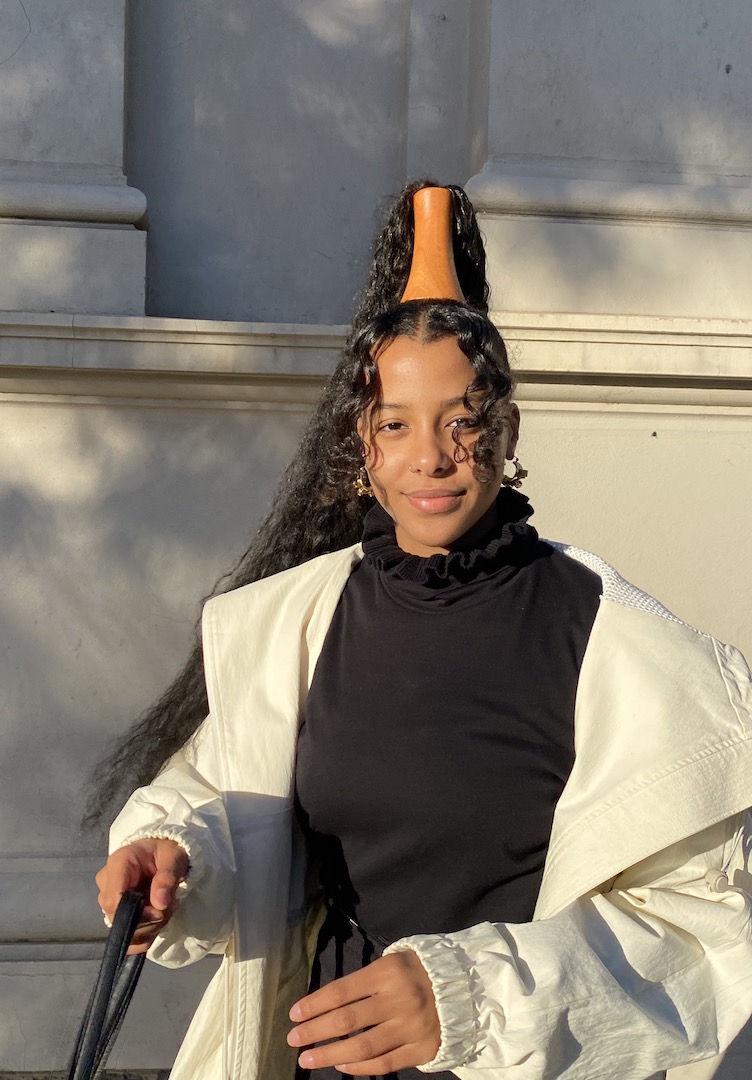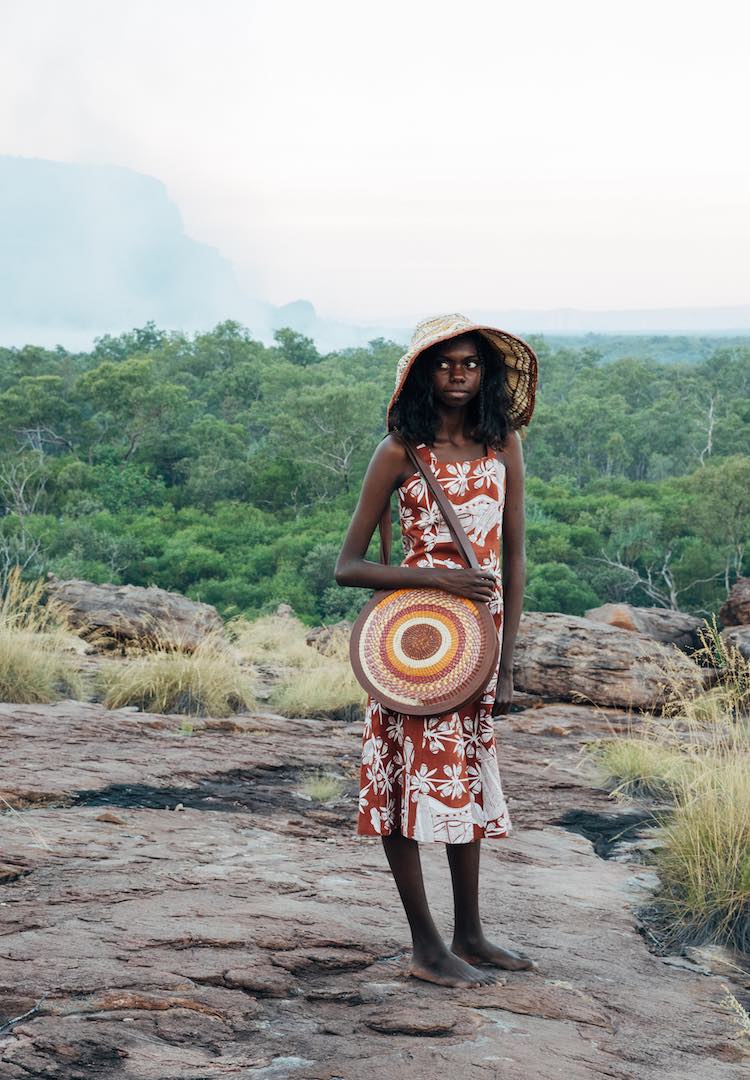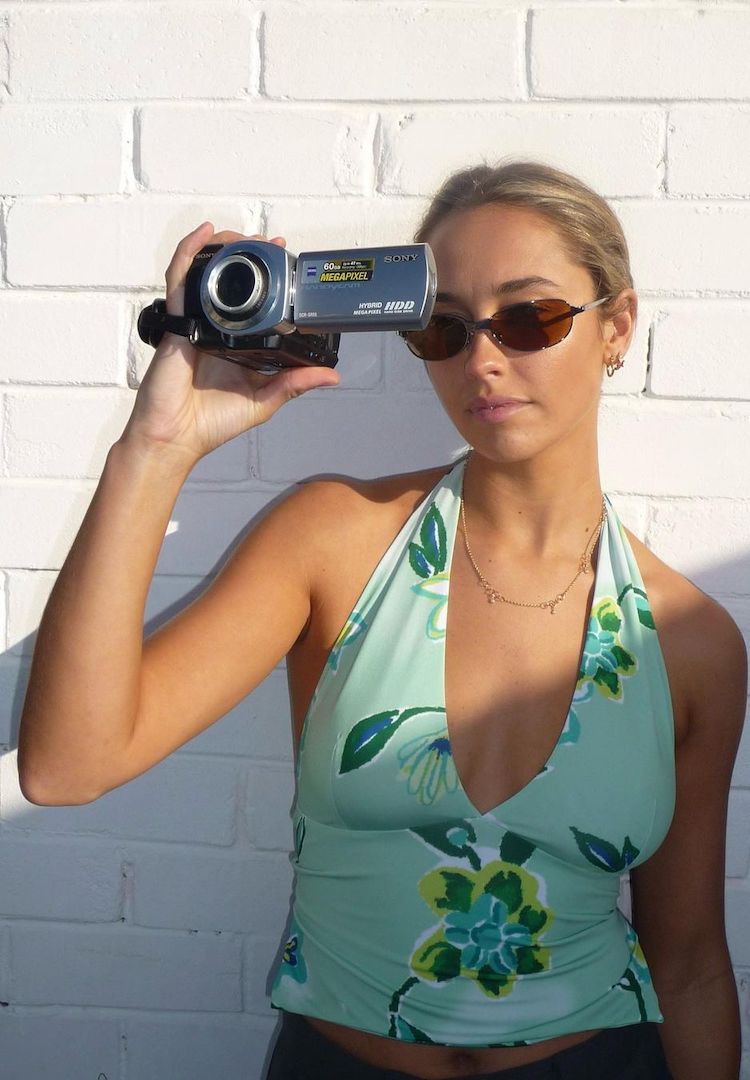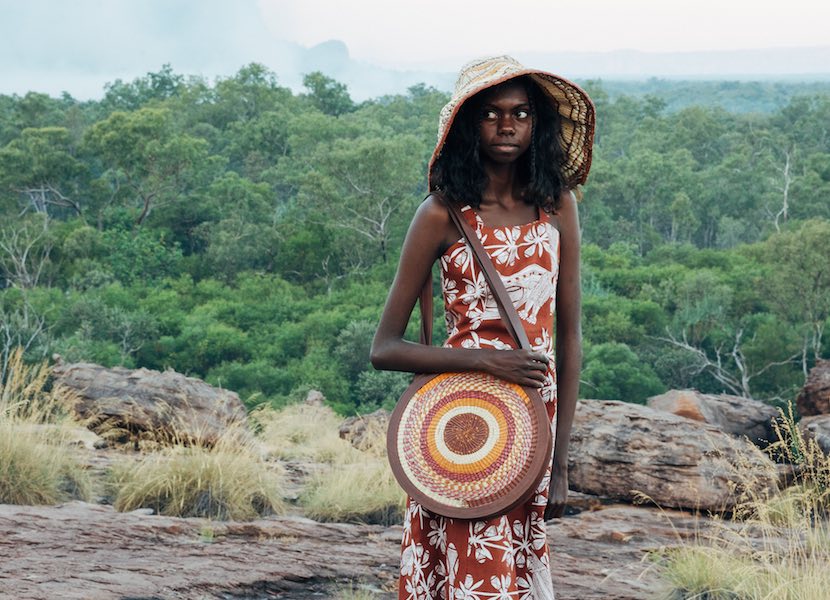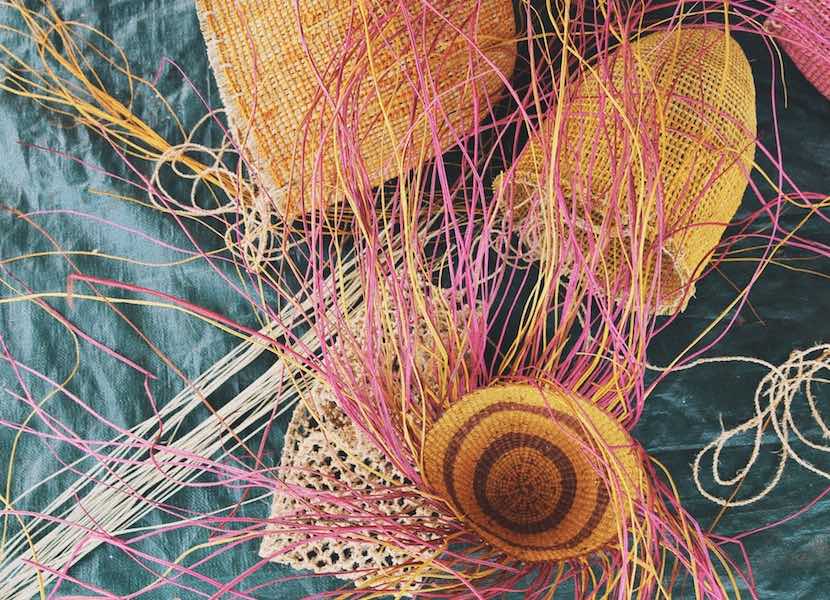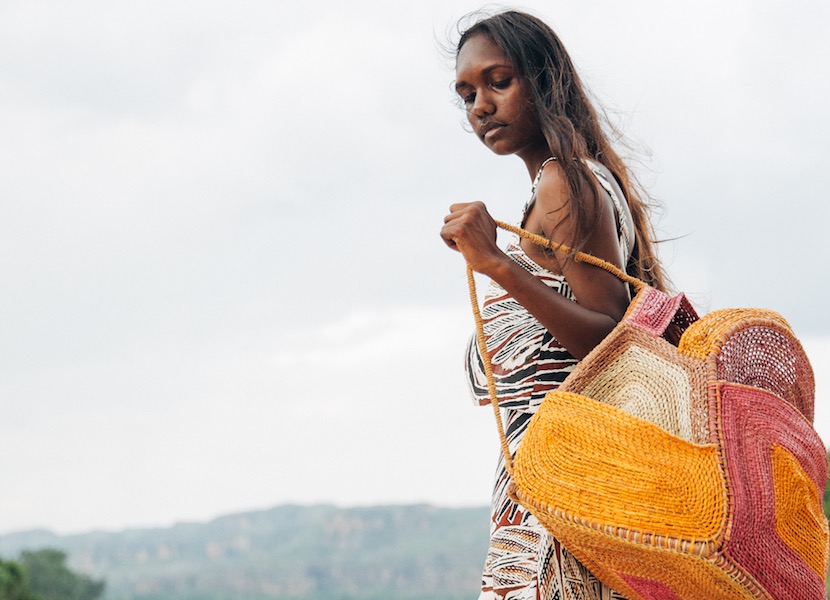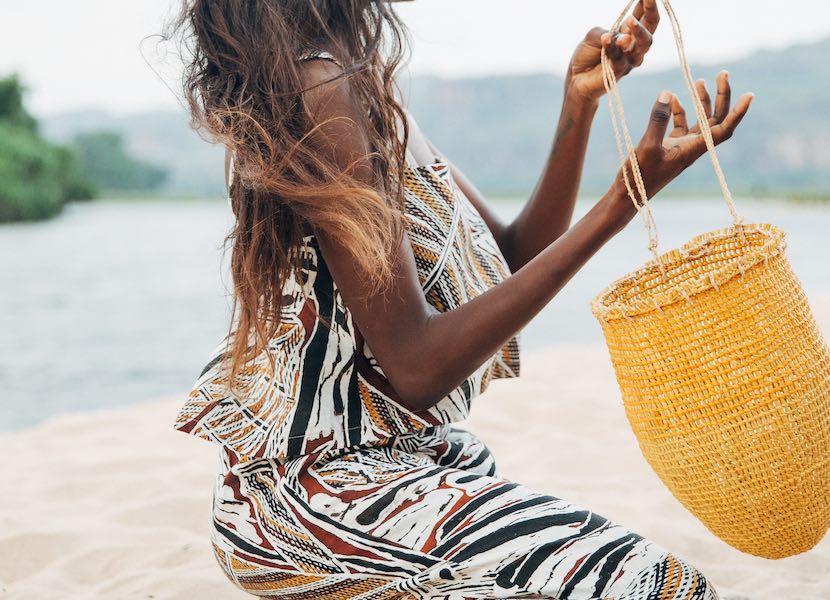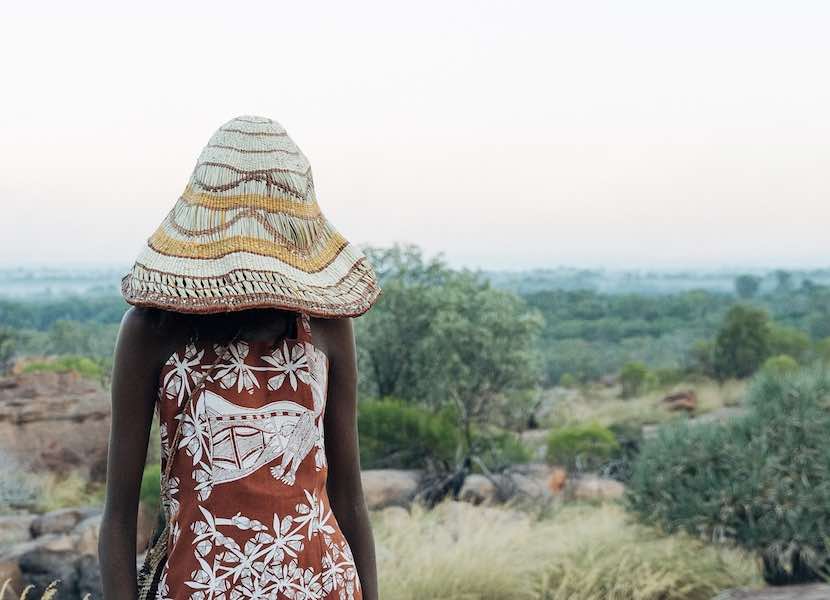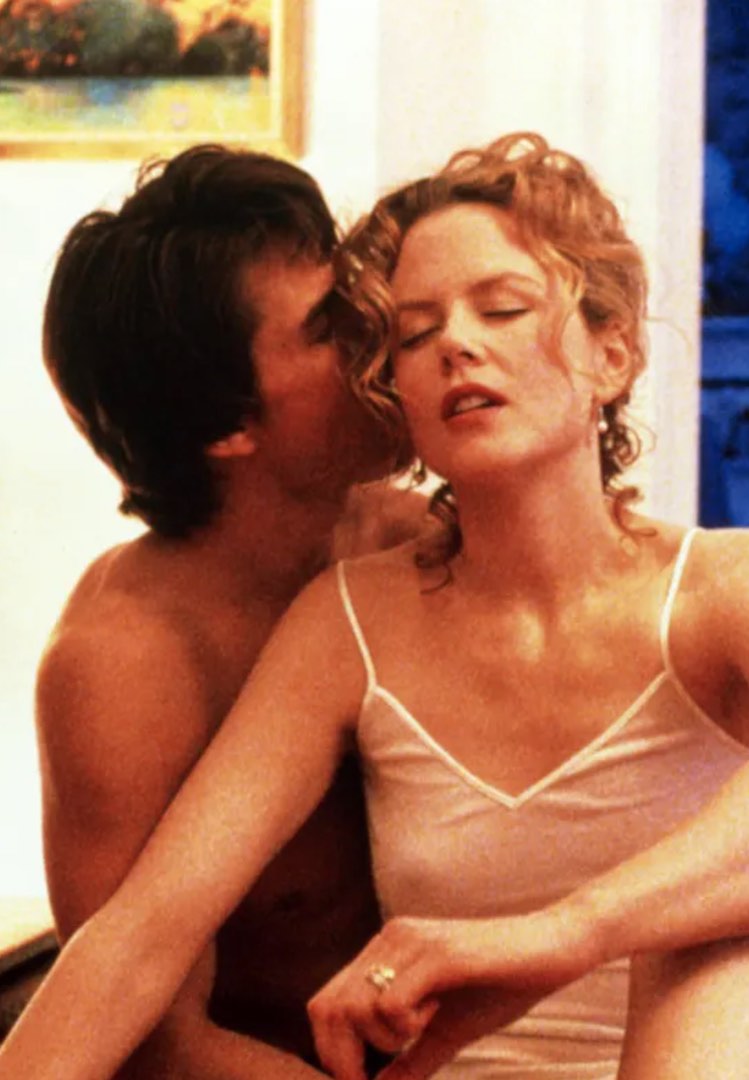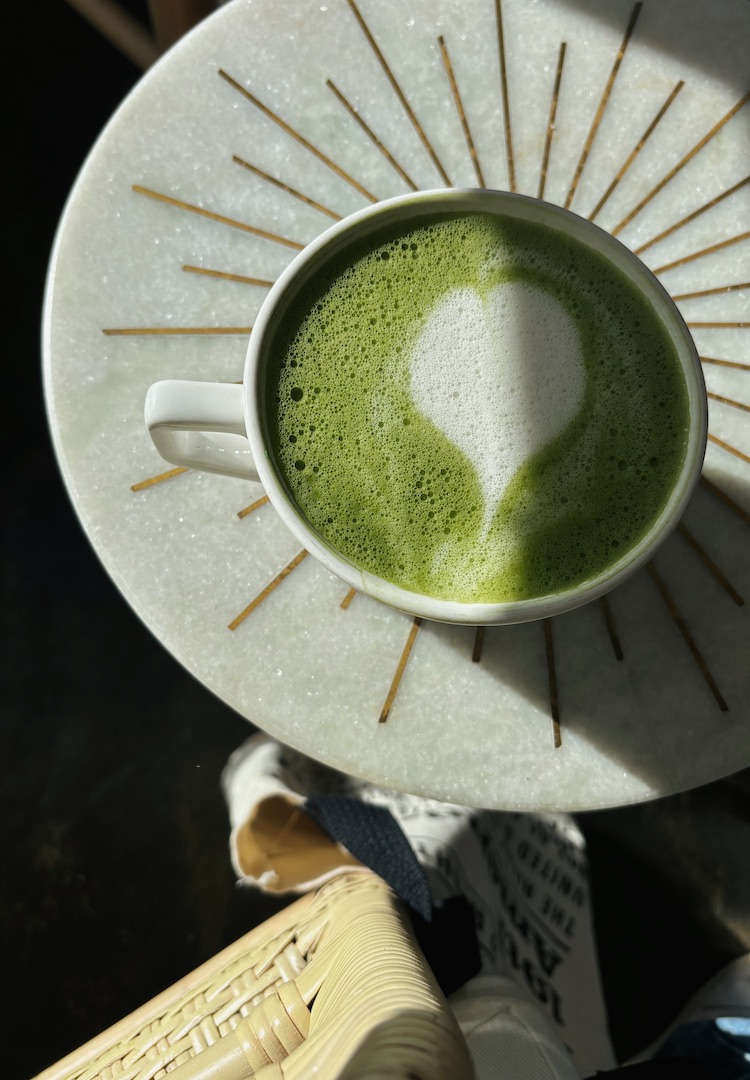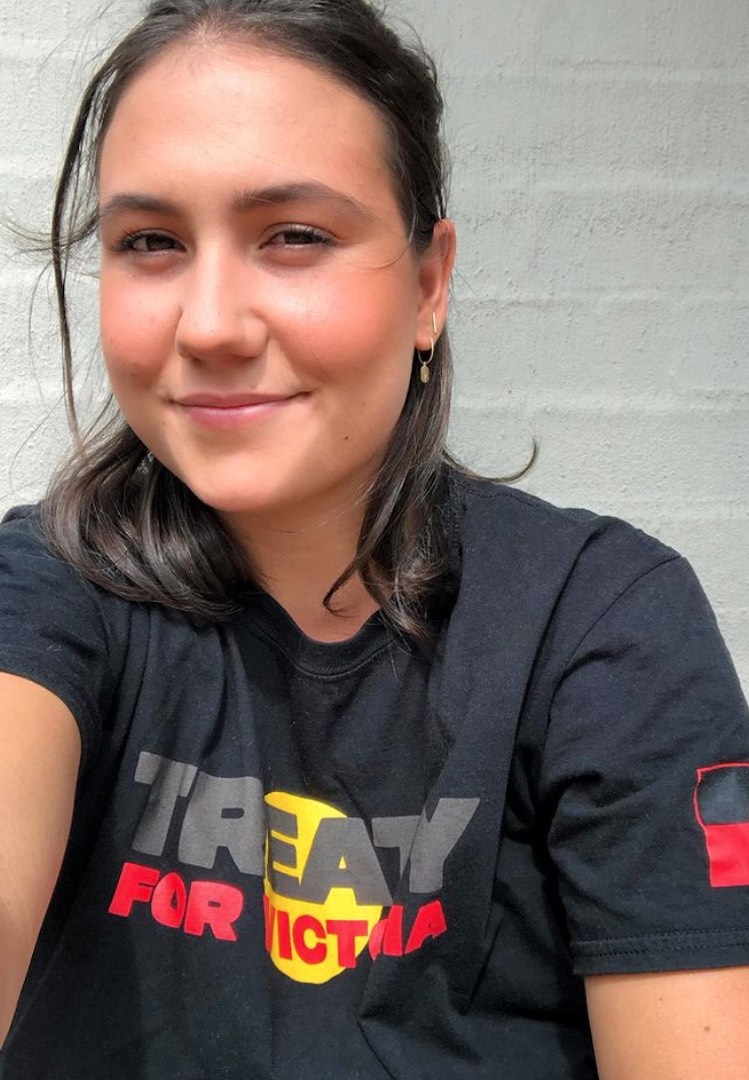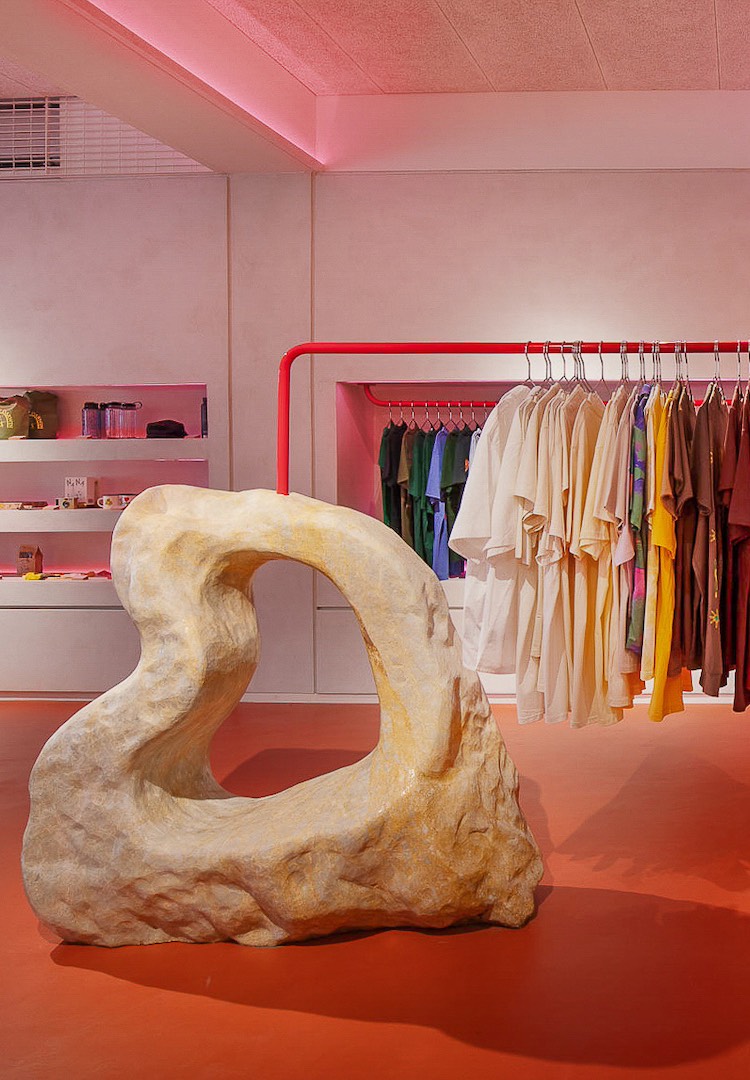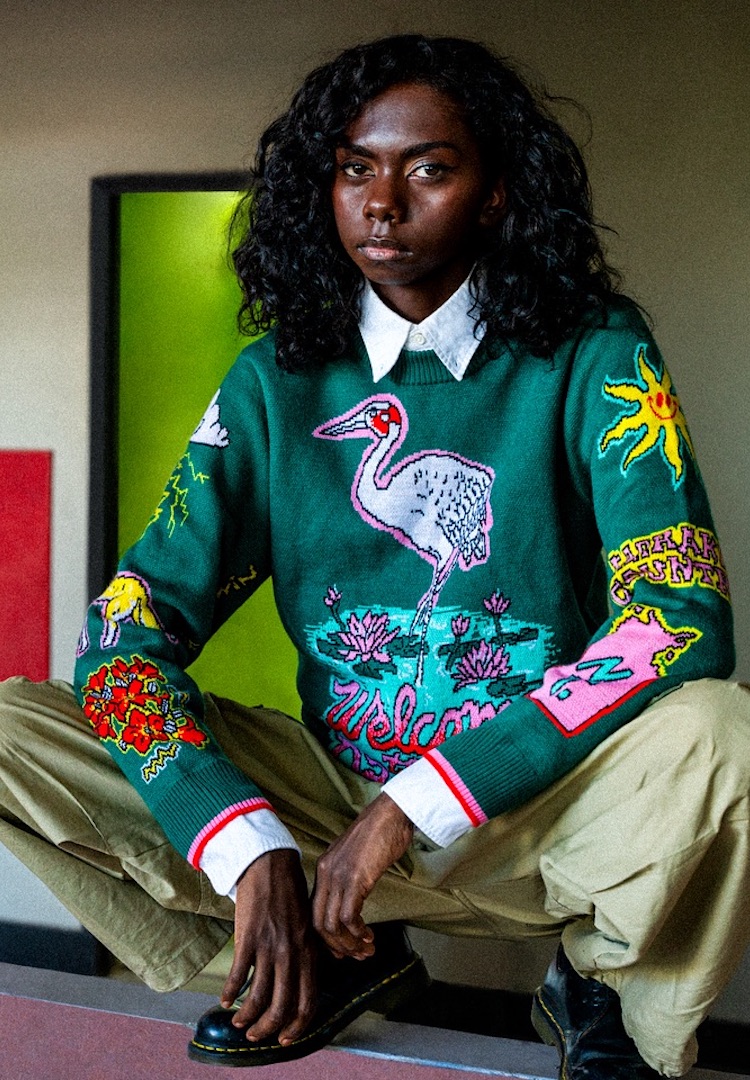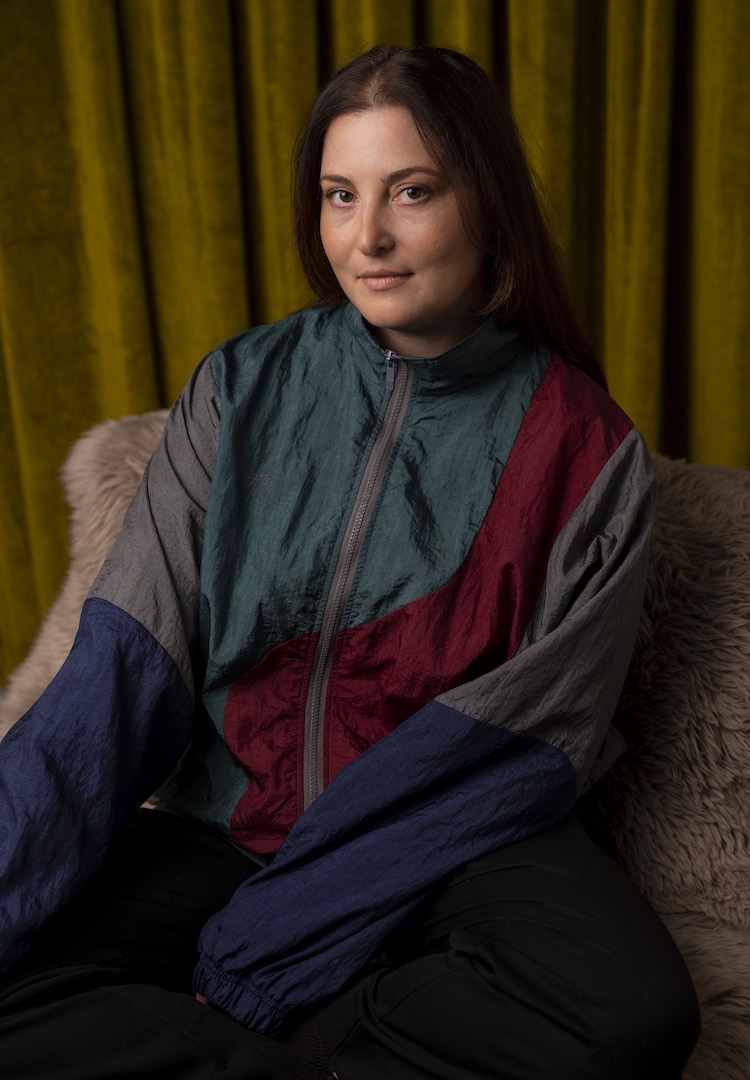Technique and tradition: Meet the master weavers of West Arnhem Land
PHOTOGRAPHY BY NINA FITZGERALD
WORDS BY NINA FITZGERALD
Master weavers Robyn Nabageyo and Helen Nawirridj take us into the world of weaving and share its role in preserving Indigenous culture.
For the master weavers of West Arnhem Land, the practice of weaving holds knowledge that passes from generation to generation, hand to hand. These artisanal practices are so deeply rooted in traditional knowledge and the entire process, from collection to stripping, to dying and drying, is dynamic and multifaceted, with far more behind the resulting pieces than meets the eye.
A few months ago, I was fortunate enough to sit down and chat with a few of the master weavers of West Arnhem Land and learn some of these fibre art stories for non-for-profit organisation and fashion label North’s newly released Stone Country Magazine.
Discover more about Indigenous fashion in our Fashion section.
The remote community of Gunbalunya lies roughly 300km east of Darwin. Access to the community, and to the incredible Arnhem Land beyond, is one of my favourite drives of the Top End.
It starts at the infamous Cahills Crossing of the East Alligator River, home to more crocs than you’d like to believe possible. As a tidal river, the time pressing issue of the changing tides makes for an even more exciting (or terrifying) journey.
Once across the red dirt road, the journey to the community is another hour or so, passing expansive flood plains and billabongs, teeming with wildlife and stone country escarpment. Full of contrast, beauty in every direction the eye can see.
It is here that I met both Robyn Nabegeyo and Helen Nawirridj, who call Gunbalanya home. These master weavers shared with me this artisan practice, allowing me to gain some deeper insight into this magic.
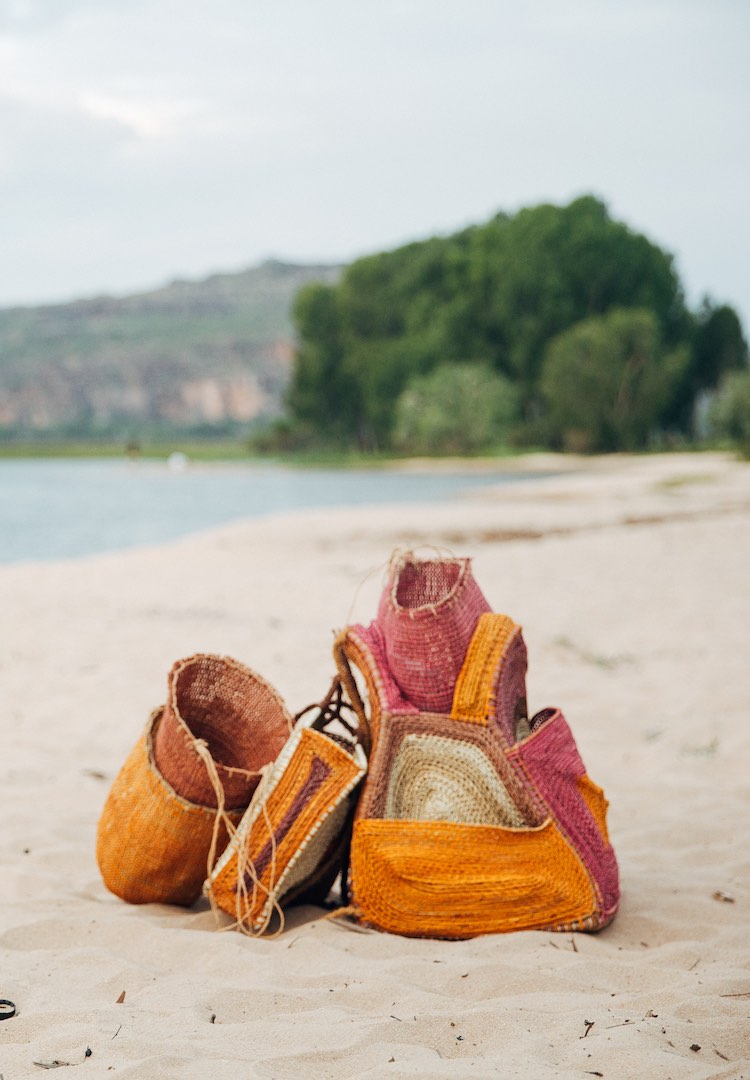
Robyn Nabegeyo
How did you learn to weave?
My mother’s grandmother used to make floor mats when I was a really little girl. We used to stay out at Mudginbardi. But I move out here at Gunbalanya, and I’ve lived at Gunbalanya all my life.
So that is your mother’s country out there?
There used to be old people that were staying there at Mudginbardi, long time ago, But they pass away, my grandmother and my grandfather, they all pass away and my mum and my dad they all pass away. I was born there at Mudginbardi, the homeland. There is one house at Mudginbardi. Another one is coming next month, or in July. A donga. But its quiet when we go outstation. Get all the pandanus, get all the dye colour. There’s lot of things we doing there when we go to outstation. We do pandanus dying there.
How did your mother’s grandmother teach you to weave?
Yeah, I was watching her. And I used to go with her [to] get pandanus and all them colour, dye colour, brown one and yellow one. To dye pandanus. From pandanus we collect it. And we strip it. We have to cook first and leave it in the hot sun. And we get it dry from the sun, and when it gets really dry we can make dilly bag, basket. Manbudbud [red flowered Kurrajong], is the stringybark. For the dilly bag.

Have you taught your daughters and granddaughters to weave?
All my daughters learn to do weaving. And my granddaughters. They know how to make baskets. I have three daughters and two boys. And this one, my daughter, she knows how to weaving and bark paintings. And canvas. She knows how to paint. They used to make this for cheeky yam. Long time ago, they used to make this one. They used to go hunting, grab all the cheeky yam, bush yam, and the honey from the tree. And put it in the basket.
They used to make it [the dilly bag] for that [collecting bush foods such as yam and honey]. Anyone, big one or small one, they used to carry. And this one. They would fill with the honeycomb. Long time ago they didn’t have any sugar. We can collect honey anytime. We just go and collect all that honey. The Rosella is the pink. The light pink, that one is Rosella. And the black. I forgot that one, the tree. We just get any one and try it all. And we just trying to cook and see the colour coming out.
So the colour may change a bit every time?
Yeah, yo [yes], every time we cook any leaf. Bark tree can cook, get colour for grey colour. Long time ago, they used to carry, all the old people. This one [holding up the stringybark]. Sometimes they used to make nets. The stringybark. Nets to carry bush tucker and sometimes net for fighting. For [language work] bream. That one [the stringybark] is very strong, yo.
Mandjurrukkumarlba [referring to the small purple berries, as seen in the photos]. This colour is only the wet season. Pink. But not the rosella. Sometimes it makes brown. Sometimes it goes one way, and make brown colour. We do it first with water and we can see.

Helen Nawirridj
So who taught you how to weave?
My grandmother, when I was 10. Sit next with her, watching her. And she was showing me. I weave marebu [woven mat] and baskets, and the earrings. My favourite is the marebu.
Can you tell me about the process of getting the pandanus?
We collected this yesterday. We take the hook sticks, and we went out near the airport to collect the pandanus with the hook stick. Pulling it down from the middle. And then we bring them back here [to the Injalak Arts Centre] and strip them, to remove the prickles, then put them in the pot, dye them and hang them to dry.
When is the colour put on them?
I put the colour in the pot and wait for maybe five or 10 minutes, and when it’s got all the colours we take them out and hang to dry. When it gets really dry we can use it. Maybe after one day. And then we start weaving, a marebu or a basket or weaving. Pandanus is called Kunngobarn.
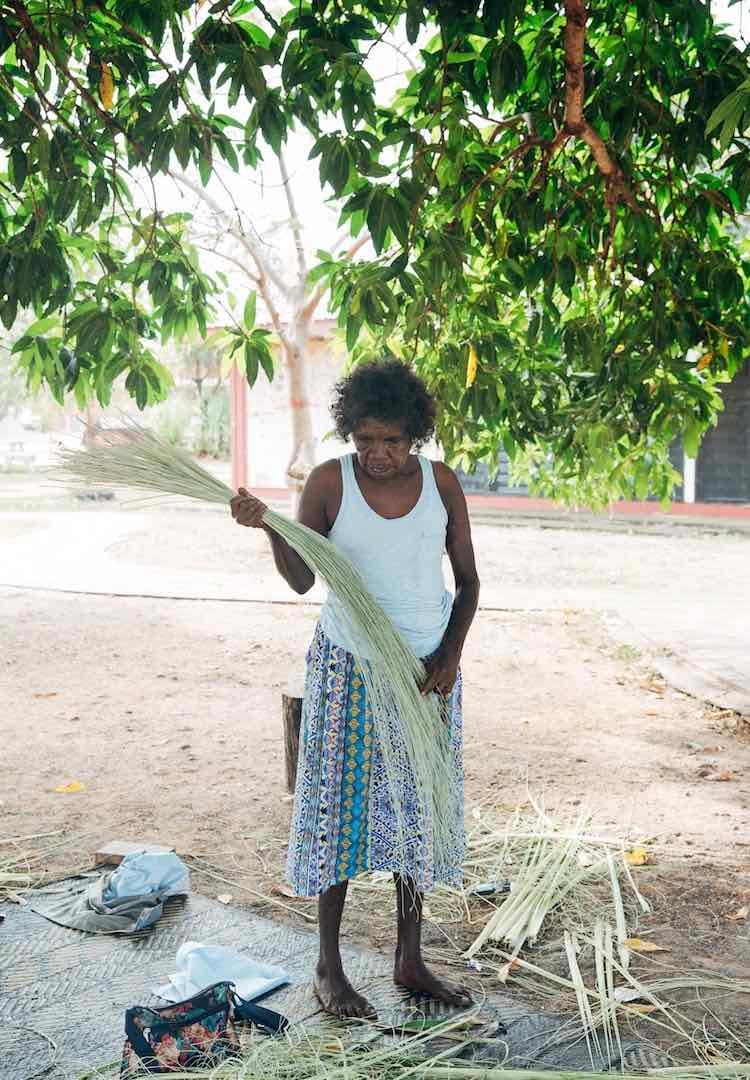
Have you taught your daughters to weave? Or granddaughters?
My daughters, they can do weaving too.
How are weavings still used in the traditional ways?
Some of the student, kids, they came here and we teach them. Even the little kids. It is important.
That is so important for keeping the culture strong. Are weavings done all year round?
All year, wet and dry. But some colours, the pink, get it only the wet season. Pink one, wet season. We go to Jabiru. It’s a fruit, berries. It’s not a tree, and it’s got flowers and berries. Collect them, and we crush them and then start boiling it. The pink is the small berry.
This purple colour, it’s beautiful.
From the Rosella! I like the green colour too. Right now I am making a very big one. A marebu. It will take me maybe two to three months to finish. I do some each day. The smaller ones maybe take one month.
This interview is an excerpt from a feature in North’s Stone Country Magazine, which will be on sale next month. Much of the fibre works featured in these images are for sale now at northhome.org.

